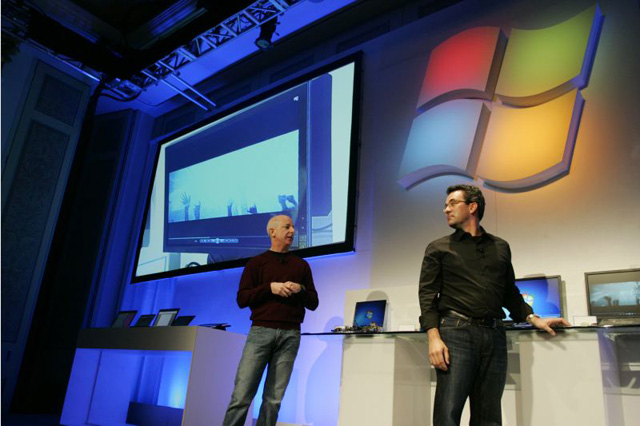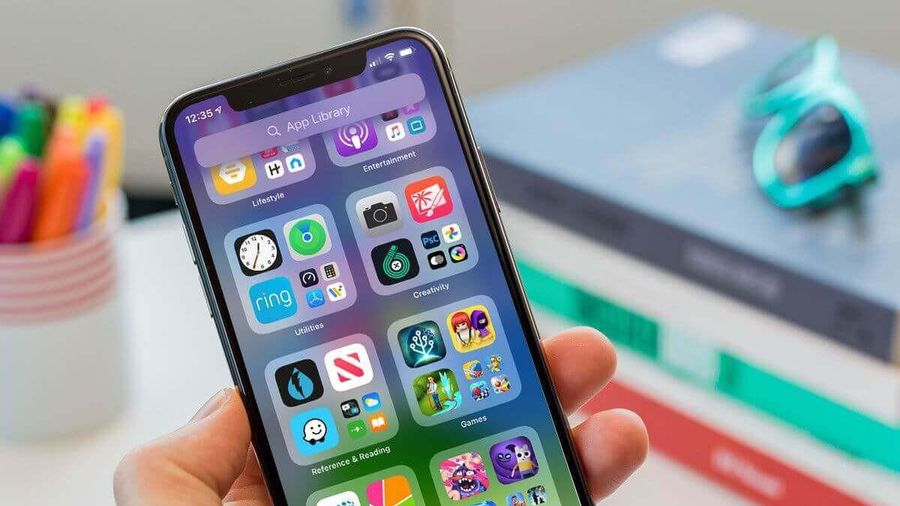Windows 8 runs with ARM: it is still arduous
System-wide designs on a chip (SoC) can change the look of mobile computing.

If Windows 8 runs successfully on systems equipped with ARM processors, we can expect to see thin and light new devices. These new generation devices include ultra-thin laptops with impressive battery life, and tablets with large screens that are super light.
32-bit ARM processors have a fairly simple design compared to Intel's chips. This simplicity means they consume less power, helping to extend the time it takes to use the device with a battery - great for phones, tablets and even laptops. With licensed processor cores, chip makers produce their own SoC processors. ARM personnel are not new, but have long been used in embedded systems or handheld devices that do not run Microsoft Windows.
But that is changing, and the look of computing can change. At the new BUILD conference last week, Windows tablet models appeared with ARM processors.
The advantage of these SoC architectures is that they can be placed in very narrow places. This obviously affects the design of the device. For example, at the BUILD conference, the audience was really impressed with a 9-inch tablet model with an extremely slim, sturdy look, weighing less than 450g.
Besides space saving, ARM also has the advantage of consuming less power.
' We don't see limits in design for ARM devices ,' said Steve Horton, software manager and product manager at Qualcomm. ' Their strength is that they can be used for many days, or the ability to make the device super thin and light .'
ARM's energy-saving capabilities are the reason why chip makers even plan to bring ARM processors to the laptop-like flip designs. ARM is clearly targeted at phones and tablets, which ARM completely dominates with chips from Qualcomm and Nvidia.
But if Windows 8 goes well on systems equipped with ARM processors, consumers can see folding laptops that run on batteries for up to 15 hours.
Of course, once the tablet is flipped, its keyboard makes it difficult to distinguish a tablet from an ultraportable laptop. Some will use x86 chips, from manufacturers like Intel or AMD, and some ARM-based will run Windows 8, but will not be able to support older Windows applications. When ever, every application that will run smoothly on these systems is still unknown, because Microsoft only provides a little bit of dripping information at the last BUILD event.
No manufacturer has revealed how Windows runs on ARM to support existing applications.
' We didn't think about it but didn't worry about it, ' said Qualcomm's Horton.
Microsoft is also unclear about supporting older applications on ARM, but the company has demonstrated a version of Office running on the new Windows Metro interface.
Windows on ARM: what is needed
Nvidia, Qualcomm, and Texas Instruments are all optimistic that the process of making ARM adapt to Windows will go smoothly. ARM architecture manufacturers representatives all noted that they need to add support for DirectX (if they are not already supported), but the process of preparing ARM to adapt to Windows is mostly about optimization. coding to work with SoC architecture.
' The work has been going on for more than a year, ' said Deepu Talla, Texas Instruments' general manager of mobile and wireless computing. ' The only thing I can say is that we need to push the graphics processing speed higher. We need to make changes to graphics that support DirectX. And we made other optimizations with software '.
It is likely that ARM chips will allow Windows 8 to function as smartphone-style.
For example, the show " Connected On " at the BUILD event last week. Connected On is a new energy reduction state of the system, not to the point of "hibernating ", allowing you to wake up the system immediately. In this state, the application pauses, but can still refresh the content in the background without much power. This paused state will even work with Qualcomm's 4G technology, which saves a significant amount of 4G pre-existing battery power.
There is only one design that we can clearly see in the form of ARM devices that will support Windows 8, that is: Microsoft requires hardware makers to focus on the 16: 9 screen, because The Metro interface is optimized so that two Metro-style applications can show up and run on one screen.
Finally, Talla of Texas Instruments as well as representatives of other ARM manufacturers have shared a view towards mobile computing, that is, the device must reach a battery life of 12 to 15 hours, whether it's a flip-flop design. tablet.
[#Poll (20) #]
You should read it
- Future AMD CPUs will also have a hybrid core architecture, like Intel chips
- Test about computer architecture P6
- This year's laptop has a 50% better battery than last year
- Everything you need to know about AMD Zen 5
- Will all Apple laptops use ARM chips?
- Test of computer architecture P5
- Intel will unveil the 'new computing era' at IFA 2014
- Samsung announced a 3nm process chip, saving more than 50% energy, 35% faster than 7nm chip
May be interested
- How to Delete a Program on Windows 8
 windows 8 is the newest windows os, available on a variety of devices. it runs and looks very different than previous microsoft os, however, and you may need a little help figuring out how to do certain functions like deleting or...
windows 8 is the newest windows os, available on a variety of devices. it runs and looks very different than previous microsoft os, however, and you may need a little help figuring out how to do certain functions like deleting or... - What to do if your new Windows PC is running slow?
 that slow performance could be due to junk software and removing it can speed up your computer instantly.
that slow performance could be due to junk software and removing it can speed up your computer instantly. - How to Install Windows 3.1
 windows 3.1 is a closed source, 16-bit operating environment that runs on top of ms-dos, released 6th april 1992. it proceeded windows 3.0 but was succeeded by windows 95. support was dropped as of 31st december 2001. true, the system...
windows 3.1 is a closed source, 16-bit operating environment that runs on top of ms-dos, released 6th april 1992. it proceeded windows 3.0 but was succeeded by windows 95. support was dropped as of 31st december 2001. true, the system... - Pressing F5 or Refresh continuously does not make your computer run faster, people are misunderstanding Windows
 every time a computer feels sluggish and slow, most windows users often have the habit of refreshing the interface, with the shortcut key f5 wishing the device to run faster. but does this action really work or is it meaningless and misunderstood long ago?
every time a computer feels sluggish and slow, most windows users often have the habit of refreshing the interface, with the shortcut key f5 wishing the device to run faster. but does this action really work or is it meaningless and misunderstood long ago? - Games that overcome hell develop and achieve success - Part 1
 there are games that, despite experiencing a difficult and arduous development period, are still very successful when launched, warmly welcomed by gamers and professionals.
there are games that, despite experiencing a difficult and arduous development period, are still very successful when launched, warmly welcomed by gamers and professionals. - Why is it disabled but Cortana still runs in the background?
 although disabling cortana virtual assistant and on windows 10 computers users use local search to find everything. however, when opening task manager, some users find that cortana still runs in the background. so why is that? the answer will be in the following article of network administration.
although disabling cortana virtual assistant and on windows 10 computers users use local search to find everything. however, when opening task manager, some users find that cortana still runs in the background. so why is that? the answer will be in the following article of network administration. - How to clear the Cache in Windows 8?
 saving the cache in windows helps to load data faster but will also consume you no less memory. especially when windows 8 operating system runs in parallel with both desktop and modern ui interfaces. therefore, after a period of use, you should delete the cache to free up space for the hard drive.
saving the cache in windows helps to load data faster but will also consume you no less memory. especially when windows 8 operating system runs in parallel with both desktop and modern ui interfaces. therefore, after a period of use, you should delete the cache to free up space for the hard drive. - How to handle when iCloud runs out of storage space
 if you regularly receive the message that icloud is full or backup failed, you can apply the following tips to reduce the size of backup data.
if you regularly receive the message that icloud is full or backup failed, you can apply the following tips to reduce the size of backup data. - How to Factory Reset Windows 11 PC
 if for some reason your windows 11 pc suddenly runs slow, behaves abnormally, crashes. this article will show you how to factory reset your windows 11 pc.
if for some reason your windows 11 pc suddenly runs slow, behaves abnormally, crashes. this article will show you how to factory reset your windows 11 pc. - Windows 10 ARM will not be supported on current smartphones
 windows 10 running on arm is set to boot in new devices supported by qualcomm's snapdragon processor later this year. however, this windows version will not support current smartphones. let's find out why!
windows 10 running on arm is set to boot in new devices supported by qualcomm's snapdragon processor later this year. however, this windows version will not support current smartphones. let's find out why!










 Overview of Google Chrome 14
Overview of Google Chrome 14 Break the Control Panel Metro of Windows 8
Break the Control Panel Metro of Windows 8 Experience the all-new Task Manager in Windows 8
Experience the all-new Task Manager in Windows 8 Microsoft Dynamics AX 2012 has up to 1,000 new features
Microsoft Dynamics AX 2012 has up to 1,000 new features Run Windows 8 directly on USB
Run Windows 8 directly on USB Microsoft revealed Windows 8 boot speed
Microsoft revealed Windows 8 boot speed